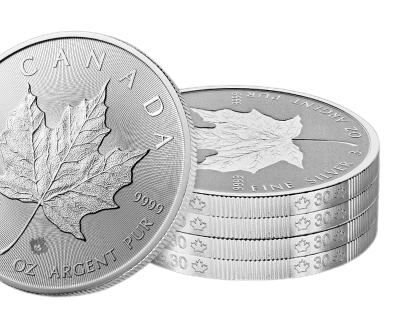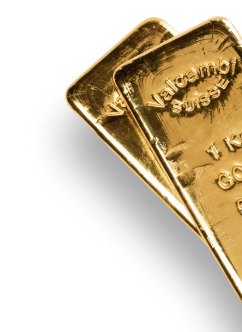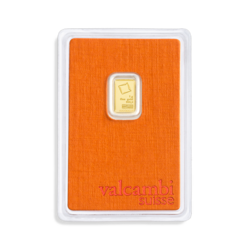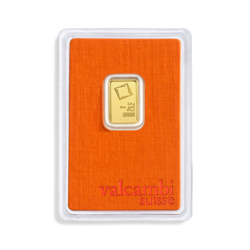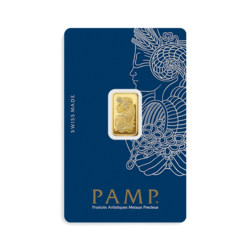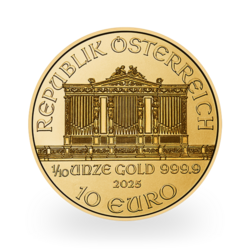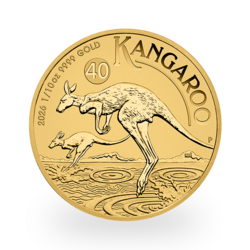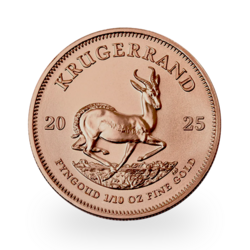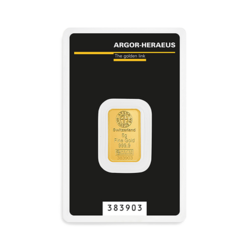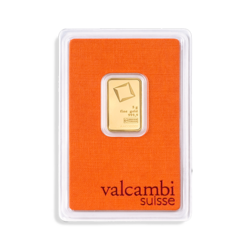France and the United Kingdom both play a major role in the gold market. France is the fourth largest holder of gold in the world with more than 2,400 tons, while the United Kingdom remains the historic heart of the market (and has been since the Middle Ages) with more than 245,000 tons traded on the London market each year. These two powers, which have always been rivals, naturally offer different perspectives on the market, particularly since Brexit. However, they do have some common interests, such as the trend towards a return to sovereignty, persistent inflation, their inextricable financial situation, and their involvement in international conflicts.
To understand their differences, we interviewed two leading observers, Paris-based manager Arnaud du Plessis (CPR Asset Management) and London-based analyst John Reade (World Gold Council). From two offices separated by the English Channel, they offer us a cross perspective from London and Paris, particularly on the differences between Western and Asian countries, the importance of cultural factors, and the decisive influence of the BRICS countries on the gold market.
Julien Chevalier: From Paris and London, do you notice that investors' attitudes toward gold differ from those observed in other major Western financial centers?
Arnaud du Plessis (Paris): Since the last quarter of 2024, there has been growing interest in this asset class in France: the increase in assets under management in ETCs backed by physical gold, which began in mid-2024, has accelerated since the start of the year. This appeal is also very clearly reflected in significant inflows across all products related to this theme. I imagine that the same is true in Anglo-Saxon countries, given the growth in assets under management in ETCs and ETFs specializing in gold and gold mining.
John Reade (London): Although London is the center of the global wholesale gold market, investment demand remains relatively limited in the United Kingdom, perhaps due to historical prohibitions on owning gold and subsequent taxes on physical gold purchases. Today, investing in gold is permitted and tax-exempt, so there are far fewer obstacles than in the past. However, a culture of gold ownership (whether physical gold or financial products) is still slow to take hold, and more effort is needed in the UK.
Julien Chevalier: How do you explain the fact that gold is more popular in Asia, including among younger generations, than in the West? Is this difference due to a longer investment horizon in Asia or other factors?
Arnaud du Plessis (Paris): The cultural aspect is decisive. In India, gold is traditionally accumulated for weddings. In China, gold coins or “little pandas” are often given as gifts during the New Year. In many emerging countries where currencies are volatile, such as Turkey and Iran, gold serves as a safe haven to protect foreign exchange reserves from sharp devaluations. In the West, currencies are more stable and young people are more interested in gold in the form of jewelry, which accounts for about half of global consumption.
In the West, and particularly in France, we cannot yet talk about true democratization of gold, as enthusiasm for it is less evident than for previous generations. While cryptocurrencies, which are popular with young people, are sometimes referred to as “gold 2.0,” gold has nothing to do with cryptocurrencies. It remains a defensive asset because it is less volatile than the equity markets and highly uncorrelated, with a very low correlation coefficient with equity indices, which can even be negative in times of stress. Cryptocurrencies, on the other hand, are far from uncorrelated. The two therefore appeal to very different investor profiles.
John Reade (London): Several factors explain why gold is valued more highly in Asia: cultural appeal, greater political and economic volatility, higher inflation and, in some cases, structurally weak currencies. Exchange controls and a lack of investment opportunities also play a role in some Asian countries. In certain markets, gold is an integral part of the cultural fabric. China, for example, is the world's largest consumer and producer of gold. Chinese investors and consumers widely recognize it as a store of value; it is easily accessible, and the industry is innovating in both jewelry and investment products to broaden its appeal. Similarly, in India, gold is deeply rooted in the culture. It is associated with preserving heritage, financial security, and family traditions. Gold plays an intrinsic social and economic role throughout the country: it is given as gifts during celebrations, celebrated on special occasions, and is a key component of a woman's dowry when she marries. But we would not characterize the difference between Asian and Western buyers as a difference in holding horizons. In both regions, there are short-term investors and speculators, as well as long-term holders.
Julien Chevalier: Do you see a shift in the center of gravity of the global gold market from North to South as emerging countries — particularly the BRICS — gain influence?
Arnaud du Plessis (Paris): The situation is very clear on the central bank side: those in emerging countries have continued to buy gold, while their Western counterparts remain relatively inactive, despite already holding significant reserves. Gold's share of central bank foreign exchange reserves has just reached a 30-year high, exclusively thanks to purchases by emerging countries. Western central banks do not seem ready to sell their stocks, but emerging countries will continue to strengthen their positions. It should not be forgotten that bullish cycles for gold are often quite long. There have been two major cycles lasting ten to eleven years: 1970-1980 ($35 to $850) and 2000-2011 ($250 to $1,900), driven by the Chinese supercycle. A third, which began in early 2016, could last until 2026-2027. Central bank purchases are a powerful driver of this trend: nearly half of them are still planning to increase their reserves, but geopolitical uncertainty — the Russia-Ukraine war, tensions in the Middle East, and US-China rivalry — should also support the trend.
Central banks have also stepped up their gold purchases since 2022, whereas until last year, investors were more inclined to sell. In 2022-2023, the two movements were at odds with each other, but this was consistent with the sharp rise in real interest rates in the US. Since then, the trend has reversed, undoubtedly due to both sustained demand from central banks and the stabilization of real rates.
John Reade (London): We have effectively seen consumers and investors in emerging markets become relatively more important in gold consumption patterns over the past 30 years, but this is mainly due to the rapid growth and increasing wealth of these countries. We use the metaphor of a shift in demand from West to East, rather than North to South, because many of the major gold-consuming countries are now located in the east (and many, such as China and India, are actually in the northern hemisphere).
Arnaud du Plessis is one of France's leading asset managers specializing in gold and precious metals. Currently at CPRAM in Paris, he oversees Natural Resources, Gold & Precious Metals strategies, with nearly 35 years of experience in the financial markets.
John Reade is one of the world's leading gold market analysts. Now Chief Market Strategist at the World Gold Council in London, he has been a market specialist for nearly 40 years, having worked for some of the world's largest international investment banks.
Reproduction, in whole or in part, is authorized as long as it includes all the text hyperlinks and a link back to the original source.
The information contained in this article is for information purposes only and does not constitute investment advice or a recommendation to buy or sell.

